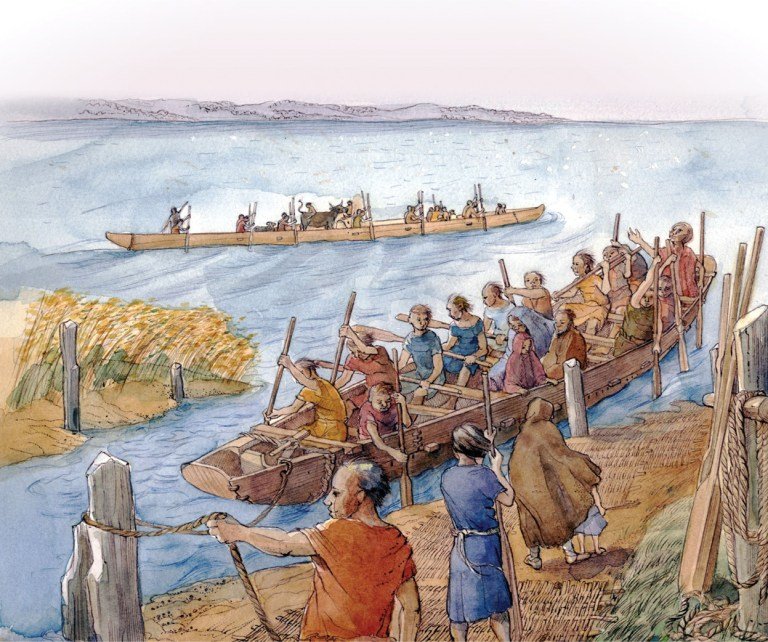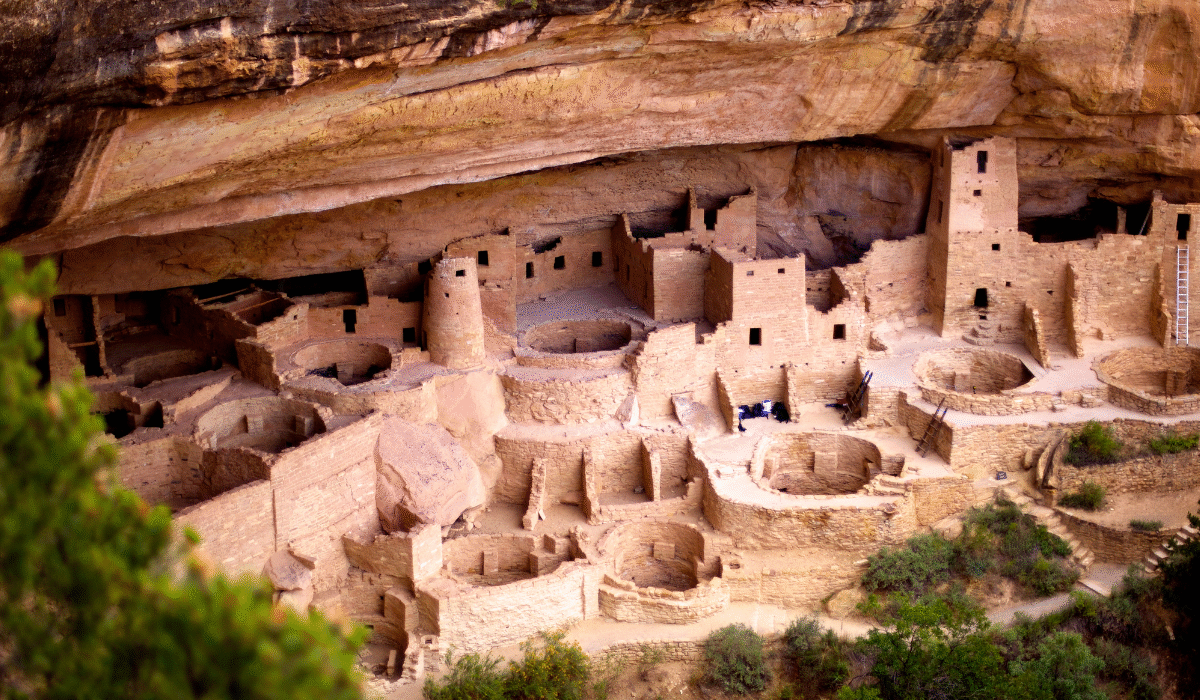Beneath the shimmering surface of our oceans lies a world largely unexplored—a world where entire chapters of human history may remain hidden, waiting to be discovered. For centuries, seafarers, philosophers, and archaeologists alike have speculated about civilizations that flourished on once-dry land, only to be swallowed by the sea in cataclysmic events. These are not just the stories of legends like Atlantis. Around the globe, from the depths of the Indian Ocean to the coastlines of Japan and the Caribbean, real and suspected ruins of ancient settlements lie buried beneath waves, silt, and coral.
Whether sunken by rising sea levels at the end of the last Ice Age, by sudden tsunamis, volcanic activity, or tectonic shifts, these submerged ruins spark a powerful question: What did humanity lose to the sea? Could these forgotten civilizations reshape our understanding of history, trade, technology, and myth?
Let us embark on a journey into the ocean’s abyss, where memory fades and mystery begins—a journey to uncover the truth about the ancient civilizations buried beneath the ocean.
The Science of Submersion: How Cities Sink
To understand how entire civilizations could vanish underwater, we must look to science. Around 12,000 years ago, at the end of the last Ice Age, massive glacial sheets began to melt, causing sea levels to rise over 400 feet. Areas that were once coastal plains turned into seabeds. Entire regions that had been home to prehistoric peoples were inundated.
But sea-level rise wasn’t the only culprit. Earthquakes, volcanic eruptions, and shifting tectonic plates could dramatically alter landscapes in an instant. Islands could sink, coastlines could fracture, and tsunamis could annihilate thriving cities.
Sometimes, human intervention played a part. Overdevelopment, dam failures, or land overuse contributed to the sinking of areas such as ancient ports. But in most ancient cases, the key forces were natural—ruthless, sudden, and final.
Atlantis: The Mother of All Lost Civilizations
No discussion of sunken cities can begin without mentioning the granddaddy of all lost civilizations—Atlantis. First described by the Greek philosopher Plato around 360 BCE, Atlantis was said to be a mighty empire located beyond the Pillars of Hercules (today’s Strait of Gibraltar). It was a utopian society with advanced technology, incredible wealth, and architectural marvels. And then, according to Plato, it vanished “in a single day and night of misfortune.”
For centuries, scholars, mystics, and adventurers have searched for Atlantis. Was it a metaphor? A moral tale? Or a memory of a real civilization obliterated by the sea?
Some believe Atlantis could have been inspired by real events like the eruption of Santorini (Thera) around 1600 BCE, which devastated the Minoan civilization. Others suggest locations ranging from the Caribbean to Antarctica. Though unproven, the story of Atlantis lit the fire that fuels much of our obsession with lost underwater worlds.
The Gulf of Cambay: India’s Sunken Metropolis
In 2001, sonar imaging revealed vast geometric patterns beneath the waters of the Gulf of Cambay (Khambhat) off the western coast of India. Stretching over several kilometers, the patterns resembled buildings, streets, and even large public structures. Some researchers hailed it as a lost city older than Mesopotamia.
Artifacts dredged from the site—including pottery shards, tools, and even human bones—were carbon-dated to around 7500 BCE, suggesting that this submerged settlement might predate known ancient civilizations by thousands of years.
Critics argue that underwater currents may have jumbled geological formations, making them appear manmade. Yet, proponents believe the site could rewrite the history of the Indian subcontinent—and perhaps of human civilization itself.
Whether these were true cities or sophisticated fishing communities, the Gulf of Cambay has become one of the most tantalizing submerged sites in archaeology.
Pavlopetri: The Oldest Submerged City in the Mediterranean
Off the southern coast of Laconia, Greece, lies Pavlopetri, a Bronze Age city thought to date back to at least 2800 BCE. Discovered in 1967, this site offers an astonishingly well-preserved urban plan, complete with streets, courtyards, graves, and buildings—an underwater time capsule.
What makes Pavlopetri exceptional is that it wasn’t destroyed by sudden disaster. Instead, it was gradually submerged due to rising sea levels and tectonic activity. Advanced underwater mapping has allowed archaeologists to digitally reconstruct the city in astonishing detail.
Pavlopetri gives us a rare and vivid glimpse into everyday life during the Bronze Age. It is proof that entire civilizations can be lost not in fire or fury—but by the quiet and relentless rise of the sea.
The Yonaguni Monument: Japan’s Underwater Enigma
Discovered in 1986 off the coast of Yonaguni, a Japanese island near Taiwan, the Yonaguni Monument is one of the most controversial underwater finds in the world. The massive rock formation features straight edges, terraces, and seemingly deliberate cuts, sparking debate over whether it is man-made or a natural geological formation.
Supporters of the man-made theory argue that the site could be over 10,000 years old, potentially linked to an ancient Japanese civilization wiped out by a prehistoric tsunami. They point to stair-like features, flat platforms, and carvings resembling symbols or animals.
Skeptics say the features are simply the result of underwater erosion and natural fault lines. To this day, the true origin of the Yonaguni Monument remains unresolved—but its mystery keeps drawing divers and dreamers from around the world.
Heracleion: Egypt’s Drowned Trading Capital
Long thought to be a myth, the city of Heracleion (Thonis) was rediscovered in 2000 beneath the waters of Aboukir Bay, near Alexandria. Once a bustling port where Greek and Egyptian cultures converged, Heracleion was swallowed by the sea sometime around the 2nd century BCE, likely due to soil liquefaction and earthquakes.
Since its discovery, archaeologists have recovered a treasure trove of artifacts: colossal statues, temple ruins, ships, coins, jewelry, and inscriptions that confirm Heracleion’s existence and grandeur.
What was once dismissed as legend now stands as proof of how empires can vanish beneath the waves—only to return centuries later in rust and stone.
Port Royal: The Sin City Swallowed by the Sea
Known as the “wickedest city on Earth,” Port Royal in Jamaica was a booming pirate haven in the 17th century. With taverns, brothels, and looted Spanish gold, it was the Las Vegas of the Caribbean.
But on June 7, 1692, disaster struck. A massive earthquake shook the peninsula, followed by a tsunami. Much of the city slid into the sea in mere minutes. Over 2,000 people died, and the city was lost beneath the harbor.
Today, Port Royal is a rare underwater site where submerged buildings still stand, complete with contents inside. It serves as a chilling reminder of how swiftly nature can reclaim its dominion.
Doggerland: Europe’s Lost Continent
Between Britain and continental Europe once stretched a vast landmass known as Doggerland, home to Mesolithic humans, rich forests, and teeming wildlife. Around 8,000 years ago, this land was slowly consumed by the rising North Sea, with the final blow delivered by a tsunami caused by the Storegga Slide—a massive underwater landslide off Norway.
Fishermen have dredged up bones, tools, and even prehistoric hunting weapons from the seabed. Doggerland may not have been a “civilization” in the urban sense, but it was certainly a thriving human habitat. Its loss represents the slow erasure of prehistory by the sea.
Cuba’s Underwater Megaliths
In 2001, a Canadian team exploring the sea floor off Cuba’s western coast discovered unusual stone structures about 2,200 feet below the surface. These formations resembled pyramids, roads, and domes—an architectural layout that some say is too organized to be natural.
Theories range from ancient cities built over 10,000 years ago to submerged islands lost during post-Ice Age floods. Critics remain skeptical due to limited verification and the immense depth. If proven, these ruins could represent one of the oldest civilizations on Earth.
Dwarka: India’s Mythical City Rises Again
Long believed to be a legend from the Mahabharata, Dwarka was the city of Lord Krishna—said to have sunk into the sea after his death. For centuries, it was dismissed as mythology. But in the early 2000s, marine archaeologists discovered ruins off the coast of modern-day Dwarka, Gujarat.
Stone walls, anchors, and artifacts dating back to at least 1500 BCE suggest that an ancient city indeed once stood here. Though debates continue over the link to the mythical Dwarka, the discovery has breathed new life into ancient Indian epics, blurring the line between legend and reality.
Ancient Climate Change and the Future of Submerged Archaeology
The stories of these sunken civilizations are more than archaeological curiosities. They offer a warning from the past. As modern sea levels rise due to climate change, today’s coastal cities—from Miami to Jakarta—face threats not unlike those that doomed ancient cities.
But they also offer opportunities. With advancing underwater technologies like submersible drones, 3D mapping, and AI-enhanced sonar, archaeologists are beginning to explore the last great frontier—our ocean floors. Every new discovery chips away at the vast amnesia of our species.
Conclusion: Remembering the Forgotten Cities
Civilizations buried beneath the ocean remind us that nothing is truly permanent. The sea, for all its beauty, is both a cradle and a grave. It has inspired myths, guarded secrets, and erased histories. Yet it also preserves them, encasing entire cities in watery tombs, waiting for the day humanity rediscovers what it once lost.
As we peer into the blue abyss, seeking answers in ruins, we find more than ancient stones—we find reflections of ourselves. Our ambition. Our fragility. Our legacy.
And perhaps, with every lost city we find, we come a little closer to understanding the great story of civilization—not just above the sea, but beneath it.






